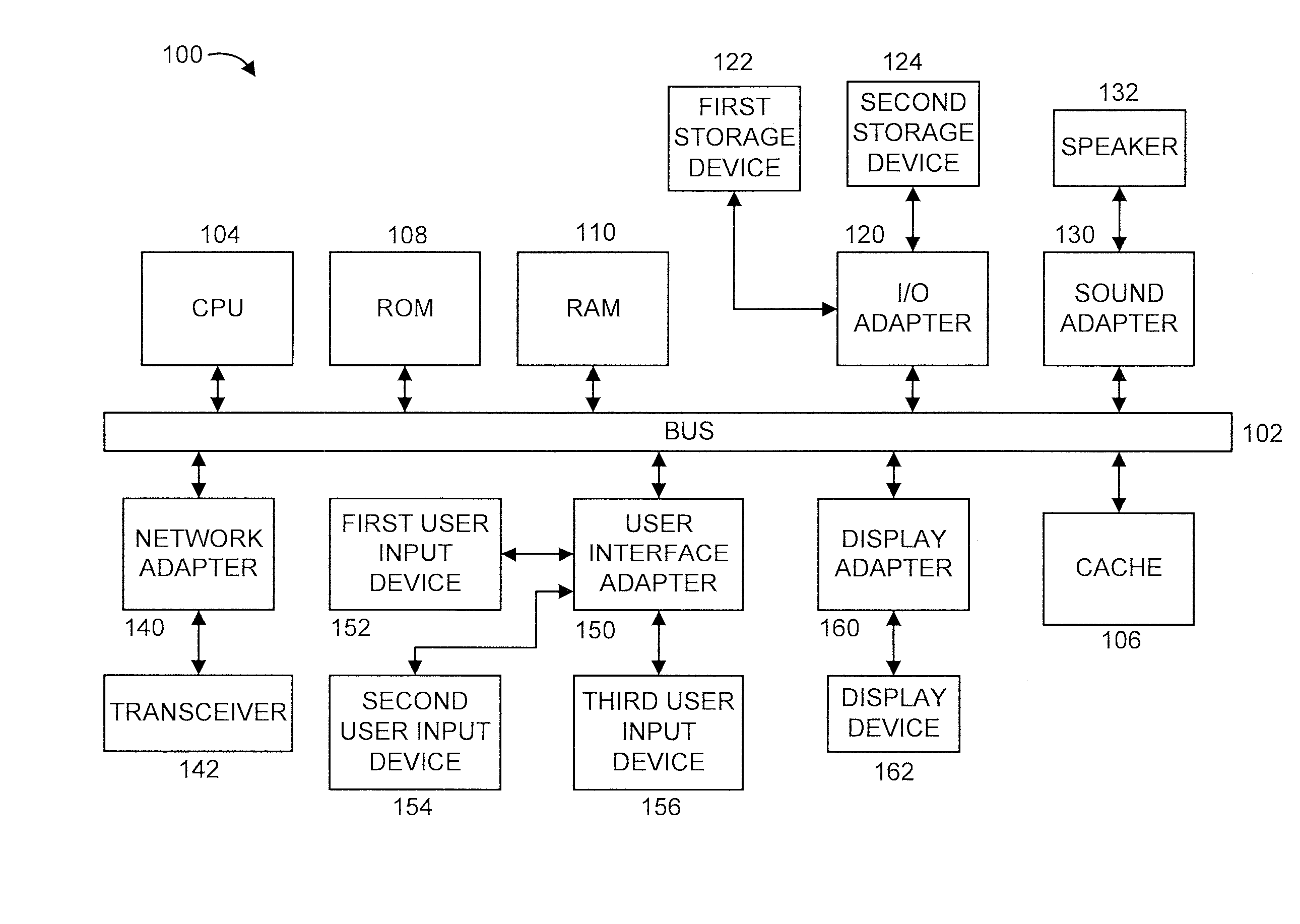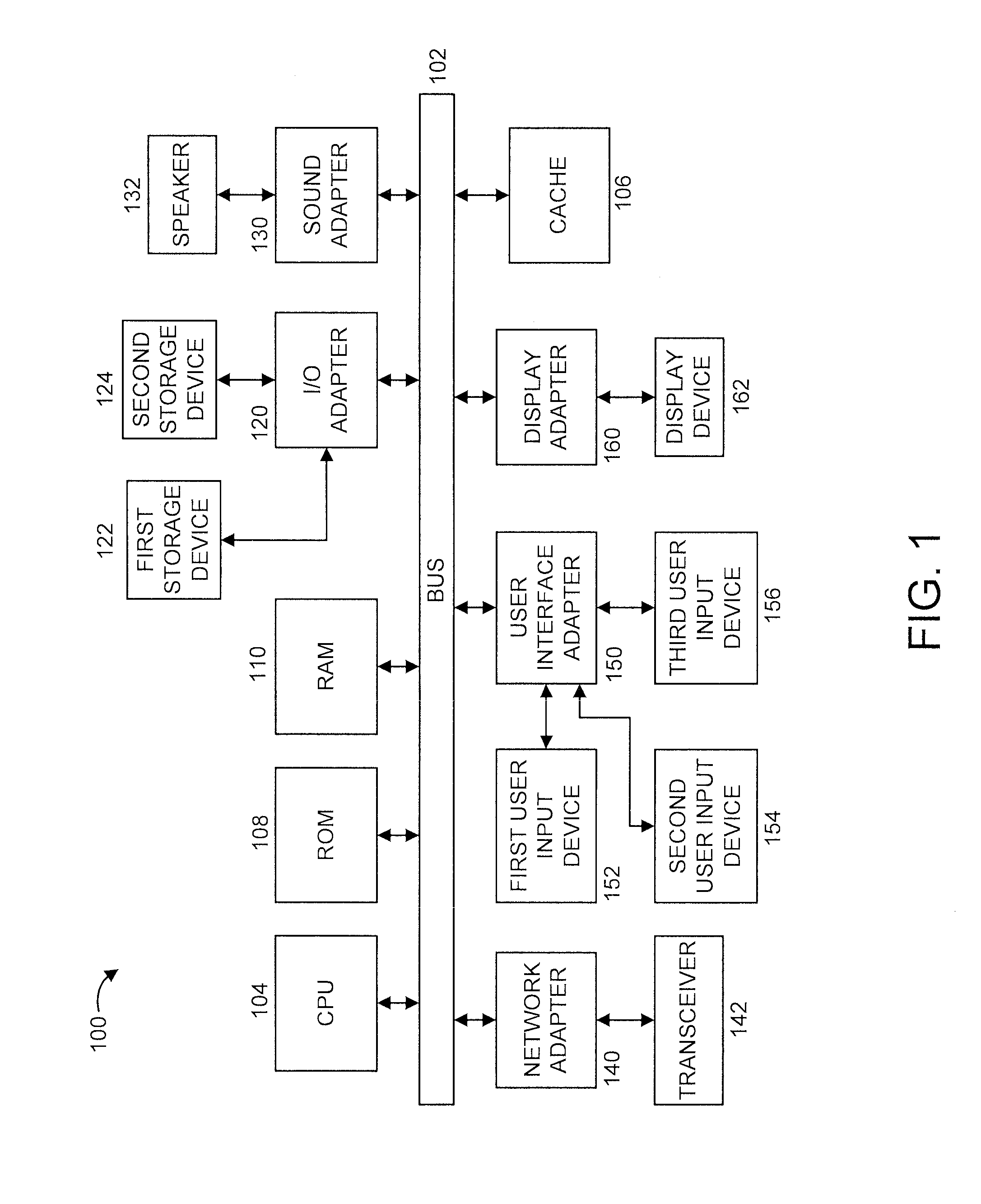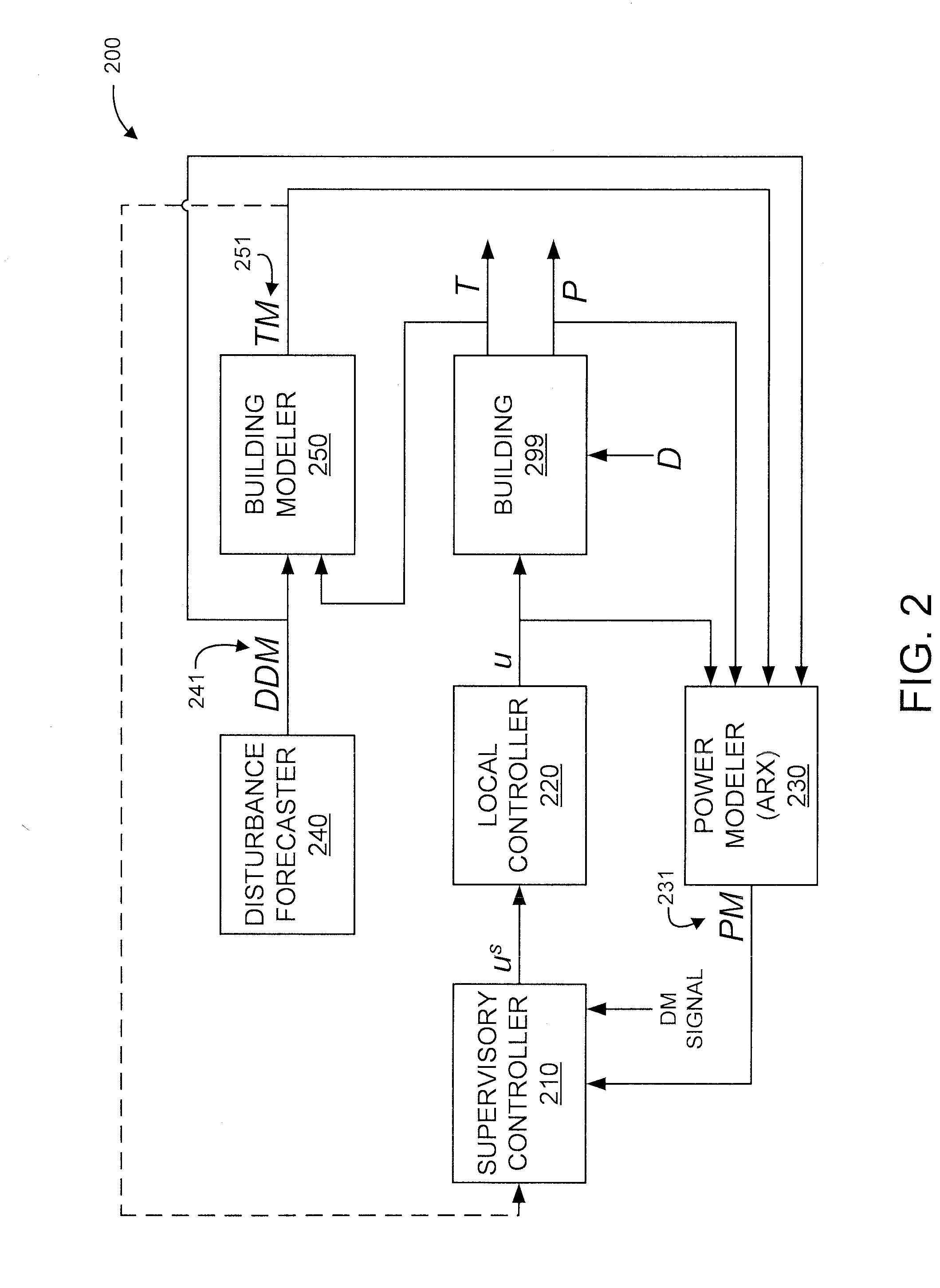Power modeling based building demand management system
a technology of building demand and power modeling, applied in the field of data processing, can solve the problems of not providing any flexibility in calculating power consumption and not being able to be incorporated into the control framework of building energy management systems (bems)
- Summary
- Abstract
- Description
- Claims
- Application Information
AI Technical Summary
Benefits of technology
Problems solved by technology
Method used
Image
Examples
Embodiment Construction
[0018]The present principles are directed to power modeling based building demand management system. The present principles can be used with respect to any type of building including, but not limited to, residential, industrial and commercial buildings.
[0019]Advantageously, the present principles bridge the gap between the commercial building's demand control and its interaction with the utility. In order to develop such a framework, a model that easily captures and forecasts a building's different power demands is necessary. This model can then be used for a variety of purposes from obtaining schedules to controlling specific loads to participating in Demand Response (DR) programs with minimum cost and comfort impact for the owner of the commercial building. In addition, the large variation in commercial building architectures and uses pose a difficulty when formulating a control structure that could be easily deployed in any setting. The model development process as well as its us...
PUM
 Login to View More
Login to View More Abstract
Description
Claims
Application Information
 Login to View More
Login to View More - R&D
- Intellectual Property
- Life Sciences
- Materials
- Tech Scout
- Unparalleled Data Quality
- Higher Quality Content
- 60% Fewer Hallucinations
Browse by: Latest US Patents, China's latest patents, Technical Efficacy Thesaurus, Application Domain, Technology Topic, Popular Technical Reports.
© 2025 PatSnap. All rights reserved.Legal|Privacy policy|Modern Slavery Act Transparency Statement|Sitemap|About US| Contact US: help@patsnap.com



